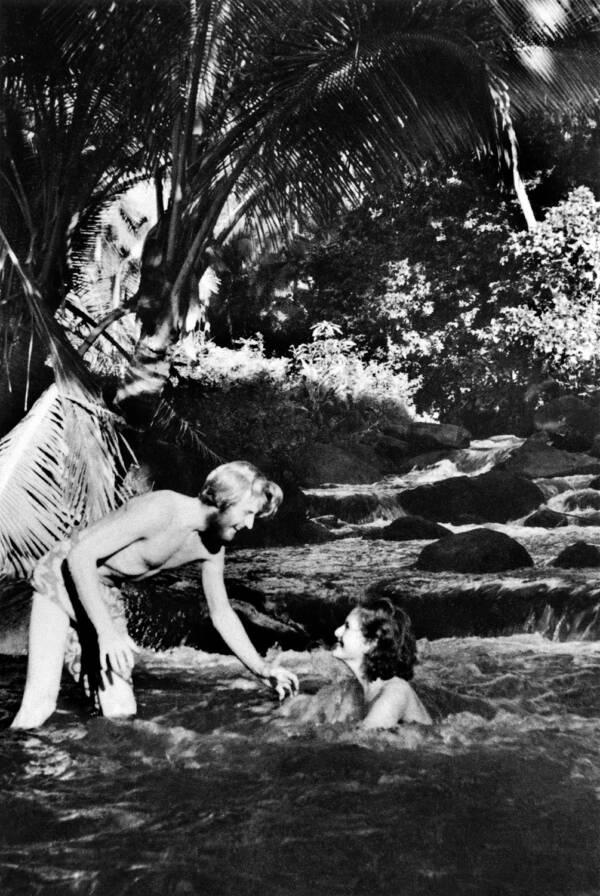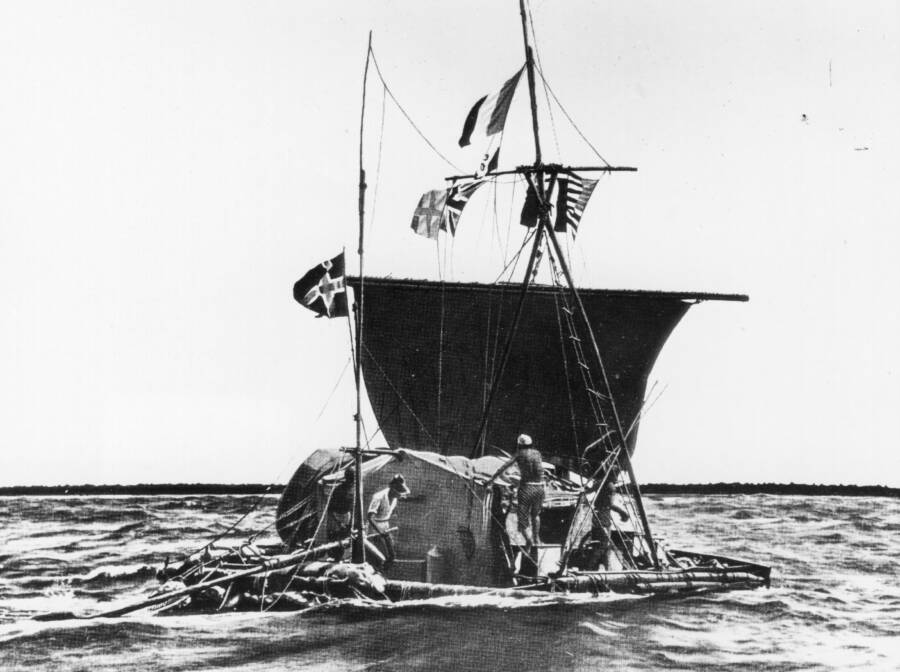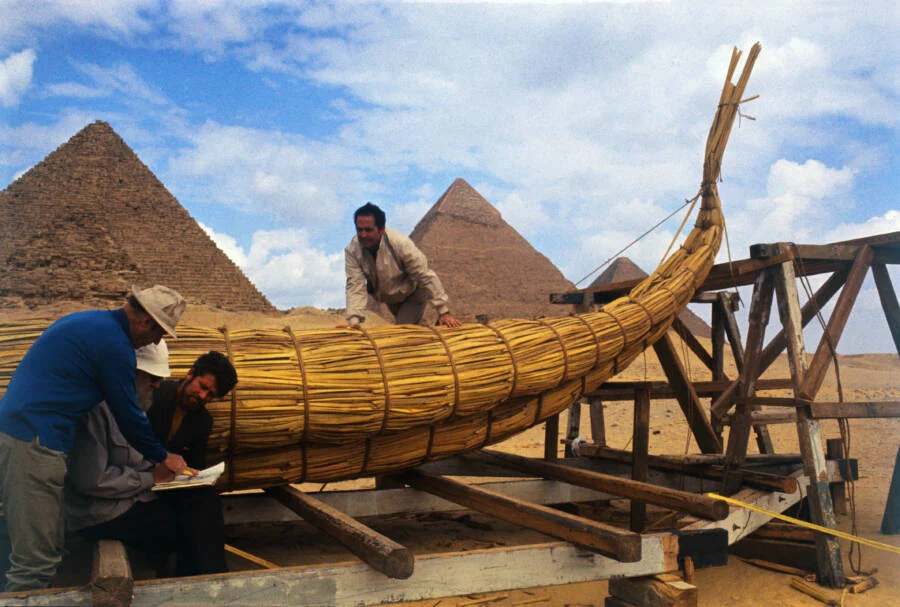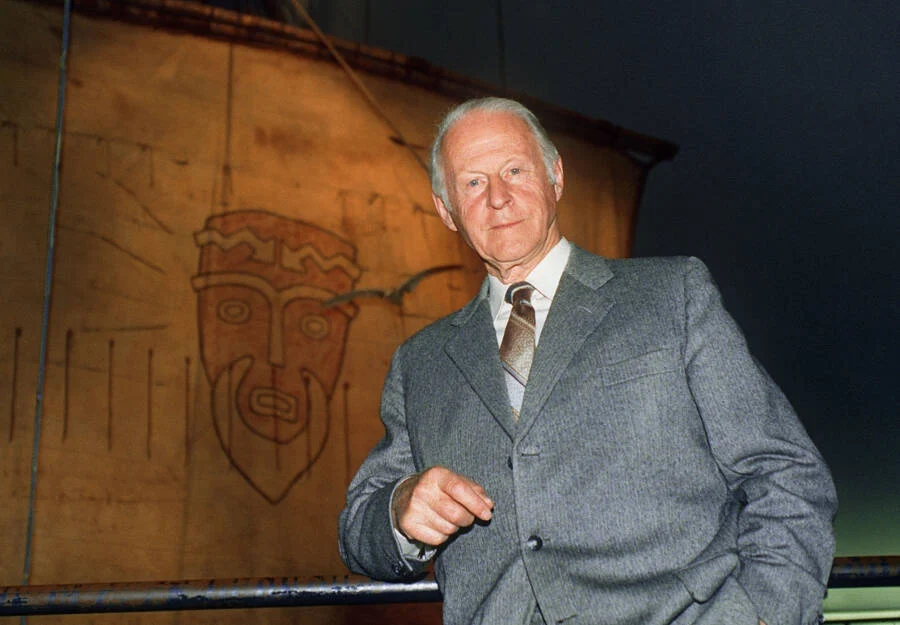Thor Heyerdahl identified patterns in the ancient world, such as similarities in artifacts, languages, and cultural phenomena like pyramid construction across different civilizations. He theorized that ancient peoples might have made contact across vast oceans and embarked on a quest to demonstrate its feasibility.
Over the span of three decades, Heyerdahl embarked on multiple transoceanic expeditions. Using simple boats, he and his crew covered thousands of nautical miles, aiming to show that ancient civilizations could have achieved similar feats of oceanic travel.
While Heyerdahl's expeditions didn't provide conclusive evidence, they did open the possibility that ancient journeys like his might have occurred. Although his theories were largely dismissed at the time, some contemporary scholars acknowledge the insights behind his vision.
How Thor Heyerdahl Became An Adventurer
Thor Heyerdahl was born on October 6, 1914, in Larvik, Norway, where he grew up with a deep curiosity about the natural world. This interest was largely influenced by his mother, Alison, who led the local museums association and nurtured her son's passion for nature and wildlife.
Heyerdahl followed his passions to the University of Oslo, where he began studying zoology and geography in 1933. However, his time in academia was brief as his desire to explore the world soon took over. By 1936, he had left university life behind to move to Polynesia with his new wife, Liv Coucheron Torp.
 Auto Draft
Auto DraftWhile living on Fatu-Hiva in the Marquesas Islands of French Polynesia, Heyerdahl became intrigued by the origins of the island's early settlers. As reported by The New York Times, he speculated that they might have traveled from South America, using the eastern ocean currents as their guide.
According to History Daily, Heyerdahl's theory was influenced by several observations. He noted that the Polynesians' diet included South American plants like sweet potatoes, and that they shared myths and legends with the Peruvians. From these connections, Heyerdahl inferred that these were not mere coincidences but signs of historical interactions between these ancient civilizations.
Over time, Heyerdahl continued to refine his theories, though his research was temporarily interrupted by World War II. During the war, he served with the Free Norwegian armed forces in northern Norway. After the conflict ended, he resumed his scholarly pursuits.
Despite his enthusiasm, Heyerdahl faced skepticism from the academic community. Most scholars maintained that Polynesians had migrated eastward from Asia, not from South America, and doubted that ancient South Americans had the capabilities to navigate across the Pacific.
Undeterred, Heyerdahl resolved to demonstrate the feasibility of such a journey. In 1947, he began preparations to sail from Peru to French Polynesia on a basic raft, intending to validate his hypothesis through practical experiment.
The Many Voyages Of Thor Heyerdahl
 Auto Draft
Auto DraftOn April 28, 1947, Heyerdahl embarked on his ambitious journey to test his theory that ancient South Americans could have made contact with Polynesian islands. He and five companions set sail on a raft constructed from balsa wood logs bound with hemp rope. Named Kon-Tiki after an ancient name for the Incan sun god Viracocha, the expedition set off eastward from the coast of Peru.
"The Kon-Tiki expedition opened my eyes to what the ocean really is," Heyerdahl wrote of the journey in his 1950 book Kon-Tiki. "It is a conveyor and not an isolator."
After spending 101 days navigating the Pacific, Heyerdahl and his crew successfully reached the French Polynesian atoll of Raroia. This achievement demonstrated that it was indeed feasible for ancient mariners to undertake the same 4,300-mile journey using rudimentary watercraft.
However, Heyerdahl's exploratory pursuits did not end with this voyage. He went on to lead additional expeditions to the Galápagos Islands and Easter Island, which he also suspected were settled by South Americans. Furthermore, Heyerdahl began exploring potential maritime links between other ancient civilizations.
By the late 1960s, Heyerdahl's interests had expanded to include the ancient civilizations of Egypt and Mexico. He was particularly fascinated by the architectural parallels, such as the pyramids in Egypt and the ruins at Chichén Itzá in Mexico, suggesting a possible cultural connection.
In 1969, Thor Heyerdahl embarked on a transatlantic journey from Morocco to Barbados aboard a reed boat named Ra, aiming to challenge the skepticism regarding the ancient Egyptians' capability to navigate such a route.
 Auto Draft
Auto DraftThe initial attempt with Ra did not succeed. The vessel failed 600 miles short of Barbados after covering 3,000 miles. Undeterred, Heyerdahl organized a second expedition in 1970 with a new vessel, Ra II. This time, after 57 days on the ocean, the reed boat successfully completed the 4,000-mile journey from Morocco to Barbados, bolstering his theory.
"I still don't know [what exactly this proves]," Heyerdahl wrote, as reported by The New York Times.
"I have no theory but that a reed boat is seaworthy and the Atlantic is a conveyer. But I would hereafter consider it barely short of a miracle if the multitude of active maritime expeditions during the millennia of antiquity never happened to… be swept off course while struggling to avoid shipwreck in the dreaded currents around Cape Juby."
In 1977, Heyerdahl pursued further exploration of ancient cultural connections with a new project. He constructed a reed boat named Tigris and sailed it down the Tigris River. This expedition aimed to demonstrate that the ancient Sumerians might have had the capability to influence regions as far-reaching as present-day Egypt and India.
During that journey, when Heyerdahl and his crew arrived in Ethiopia, they faced unforeseen challenges. Due to ongoing local conflicts, Ethiopian authorities denied them permission to dock. In a dramatic response to this impediment, Heyerdahl chose to burn his boat as a protest.
"Our planet is bigger than the reed bundles that have carried us across the seas," he and his crew wrote in a letter to the U.N., "and yet small enough to run the same risks unless those of us still alive open our eyes and minds to the desperate need of intelligent collaboration to save ourselves and our common civilization from what we are about to convert into a sinking ship."
By this time, Heyerdahl was in his 60s and decided it was time to conclude his adventurous seafaring career. He believed he had made a lasting impact and raised critical questions regarding the interactions between early civilizations.
"I have proved that all the ancient pre-European civilizations could have intercommunicated across oceans with the primitive vessels they had at their disposal," he said, according to The New York Times. "I feel that the burden of proof now rests with those who claim the oceans were necessarily a factor in isolating civilizations."
Yet, the question remains: Did Thor Heyerdahl truly succeed in disproving his critics?
The Legacy Of The Norwegian Explorer
 Auto Draft
Auto DraftWhen Thor Heyerdahl passed away on April 18, 2002, the prevailing scholarly consensus still supported the idea that Polynesia was populated by migrants from the west—specifically Asia—contrary to Heyerdahl's theory of eastern settlement from South America.
Current genetic research confirms that the first settlers of Polynesia likely originated from Asia, with Taiwan or the Philippines being the most probable sources.
Nevertheless, Science Norway reports that additional genetic studies have lent some credence to Heyerdahl's theories, indicating that ancient Polynesians did indeed possess genetic markers linked to South American populations.
Conversely, some contemporary scholars propose that the influence may have traveled in the opposite direction, with Polynesians reaching and impacting ancient South American cultures. This theory is supported by the Pacific island cultures' long history of skilled navigation using basic watercraft.
Ultimately, this topic requires further investigation, dialogue, and experimentation. However, fostering such inquiry was precisely what Thor Heyerdahl aimed to achieve in his lifetime.
"I have challenged a lot of old dogma, and this has stimulated a lot of discussion," Heyerdahl said before he died. "And in science you need discussion."



















